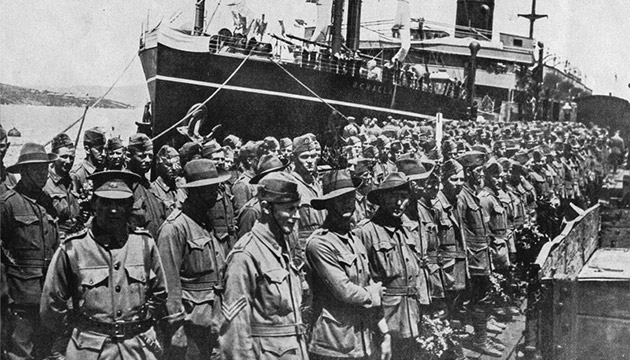The Western Australian town of Albany will mark the 100th anniversary of World War I with a celebration of its vital role in the Anzac story.
Story By John Dunn
It was just after dawn on November 1, 1914, when a huge, mixed fleet began lining up to leave King George Sound and Princess Royal Harbour, which comprise the magnificent stretch of water, 14 kilometres by 12 kilometres, that is the Western Australian port of Albany.
Albany was the departure point for troops leaving to fight on the battlefields of Europe in World War I. They comprised the Australian Imperial Force and New Zealand Expeditionary Force, which were to become the Australian and New Zealand Army Corps – the Anzacs. Some 30,000 of them, along with 7843 horses, boarded the 36 ships of this fleet that had assembled in the harbour in late October. Just after sunrise that November morning the troop-carrying ships, which were mainly merchant vessels diverted from their usual maritime runs, were escorted by three cruisers – the Sydney, Melbourne and Minotaur – and sailed out of the sound. They passed the quartet of small rocky islands – Michaelmas, Breaksea, Mistaken and Seal – and steamed into the Southern Ocean, where they were joined by other escorts, HMS Psyche, Pyramus and Philomel, all from New Zealand, and Ibuki from Japan.
The troop ships, which had been taken over by the government, were a varied lot, ranging from the largest, the 11,000-tonne Argyllshire, to the smallest, the 4200-tonne Saldanha, with the Orvieto, Euripides and Omrah the fastest at 15 knots, and the slowest, the Southern, able to make just 10.
They moved south then west, their decks crowded as the troops lined the railings to look longingly at the town with its clutch of commercial buildings on the waterfront and the tin-roofed houses that sat on the slopes behind. For many, this would be the last glimpse of their homeland. Thousands did not return, killed either at Gallipoli itself or in the subsequent fighting that took place on the farmlands of northern France and Belgium.
This Story is from Issue #97
Outback Magazine: Oct/Nov 2014










